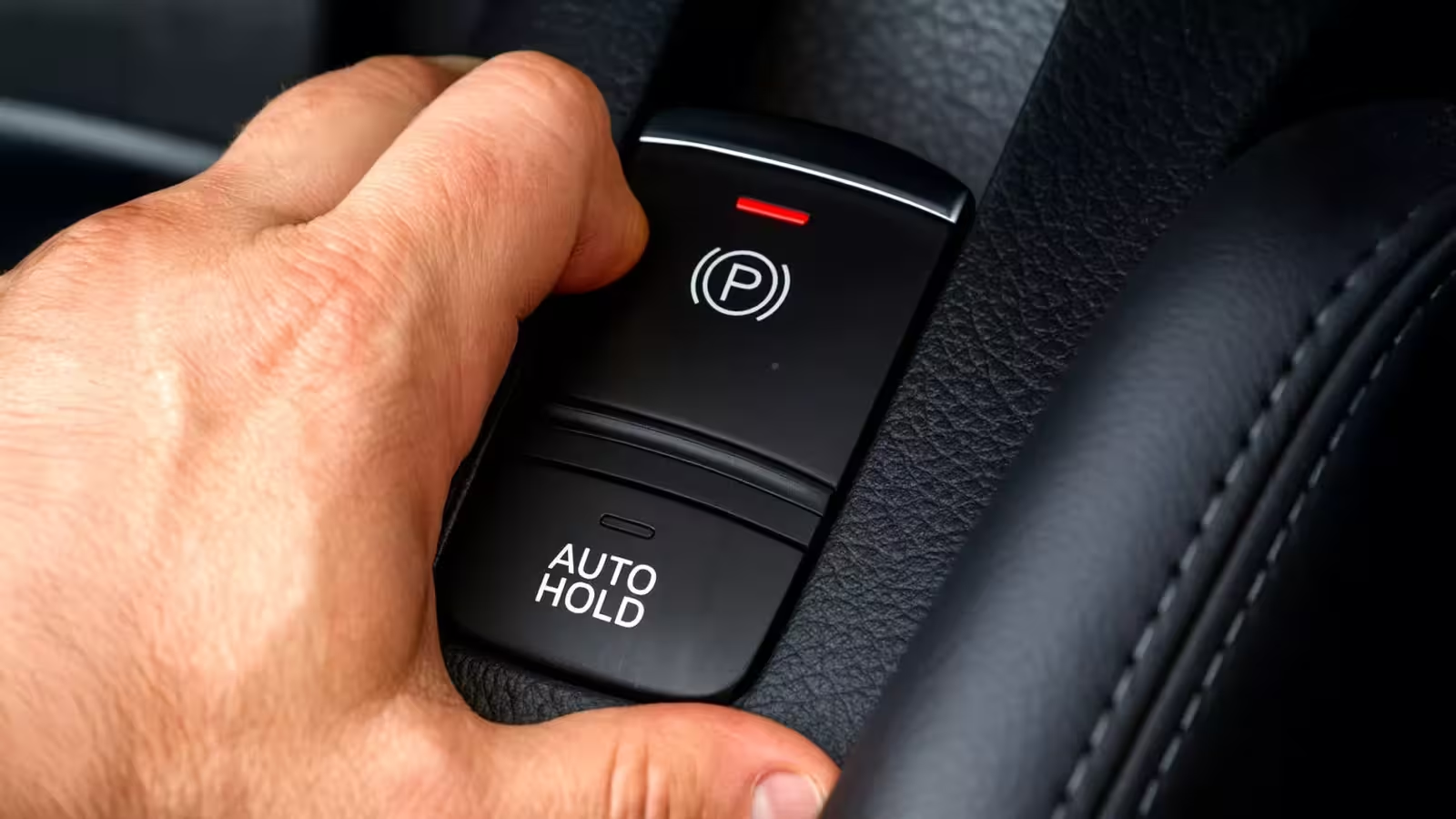5 Minutes
Introduction: the curiosity that shouldn’t be tested on public roads
Many drivers have glanced at the electronic parking brake (EPB) switch and wondered: what if I pull this while the car is moving? A few automotive journalists, content creators and even a pair of German police officers have answered that question for us — with surprising, mostly reassuring results. This article explains how modern electronic parking brakes behave at speed, why they can stop a car safely in some systems, and how they differ from traditional mechanical handbrakes.
Real-world experiments and outcomes
Casual experiments — from journalists to popular YouTube channels — show a consistent pattern: when you activate an EPB while driving, modern systems typically trigger the vehicle’s braking control systems rather than simply locking the rear wheels. In multiple tests, including a German police cruiser trial and videos from channels like Garage 54 and well-known automotive personalities, pulling the electronic parking brake brought the car to a controlled stop with audible warnings and ABS intervention.
High-speed behavior
At highway speeds the EPB often asks the car’s electronic stability control (ESC) and anti-lock braking system (ABS) to assist. Where the system is integrated with vehicle safety electronics, all four wheels can be used to slow the car down in a controlled manner. However, older or less integrated systems — or systems on some luxury vehicles — may respond more slowly or rely primarily on the rear brakes, which can change stopping distances.
How modern EPB systems are designed
Electronic parking brakes replace mechanical cables with electric motors or hydraulic actuators controlled by software. Key specifications and components include an actuator motor at each rear caliper (or a central hydraulic unit), ECU logic that communicates with ABS/ESC modules, fail-safe detection, and driver feedback such as beeps or dashboard messages. OEMs design EPBs to meet safety regulations and avoid unintended deployment, including speed thresholds and double-action requirements in some markets.
Performance, safety and market positioning
Performance: Integrated EPBs that work with ABS can reduce stopping distance compared with a simple rear-only lockup because ABS prevents wheel lock and maximizes traction. Safety: In emergencies — for example, if a driver becomes incapacitated — an EPB may be used by a passenger to slow the vehicle if the system supports it.
Market positioning: EPBs are common on mid- to high-range vehicles and are increasingly standard on mass-market models for convenience, packaging, and safety reasons. Premium manufacturers often integrate EPBs more deeply with driver-assist systems; some entry-level or older cars still use mechanical handbrakes.
Comparison with traditional mechanical handbrakes
Traditional mechanical handbrakes operate through cables that mechanically clamp the rear brakes. If pulled hard while moving, they can lock the rear wheels and cause a skid because there is generally no ABS intervention for a manually applied mechanical parking brake. By contrast, modern EPBs that are properly integrated with ABS/ESC can produce a safer, more controlled deceleration.
Practical advice and verdict
Bottom line: don’t experiment with parking brakes on public roads. If you encounter a real emergency where the driver is incapacitated, an integrated EPB can be a useful last-resort method to slow the vehicle — but its effectiveness depends on vehicle design and electronic integration. Owners of cars with mechanical handbrakes should be aware that pulling that lever while moving will likely lock the rear wheels and increase the risk of a skid.
Further reading and specifications to check on your vehicle
Check your owner’s manual for EPB behavior, system integration with ABS/ESC, speed limits for activation, and emergency-mode instructions. For buyers comparing models, look at feature lists for "electronic parking brake," "automatic hold," and the extent of ABS/ESC integration to understand real-world safety performance.
Source: carscoops


Leave a Comment